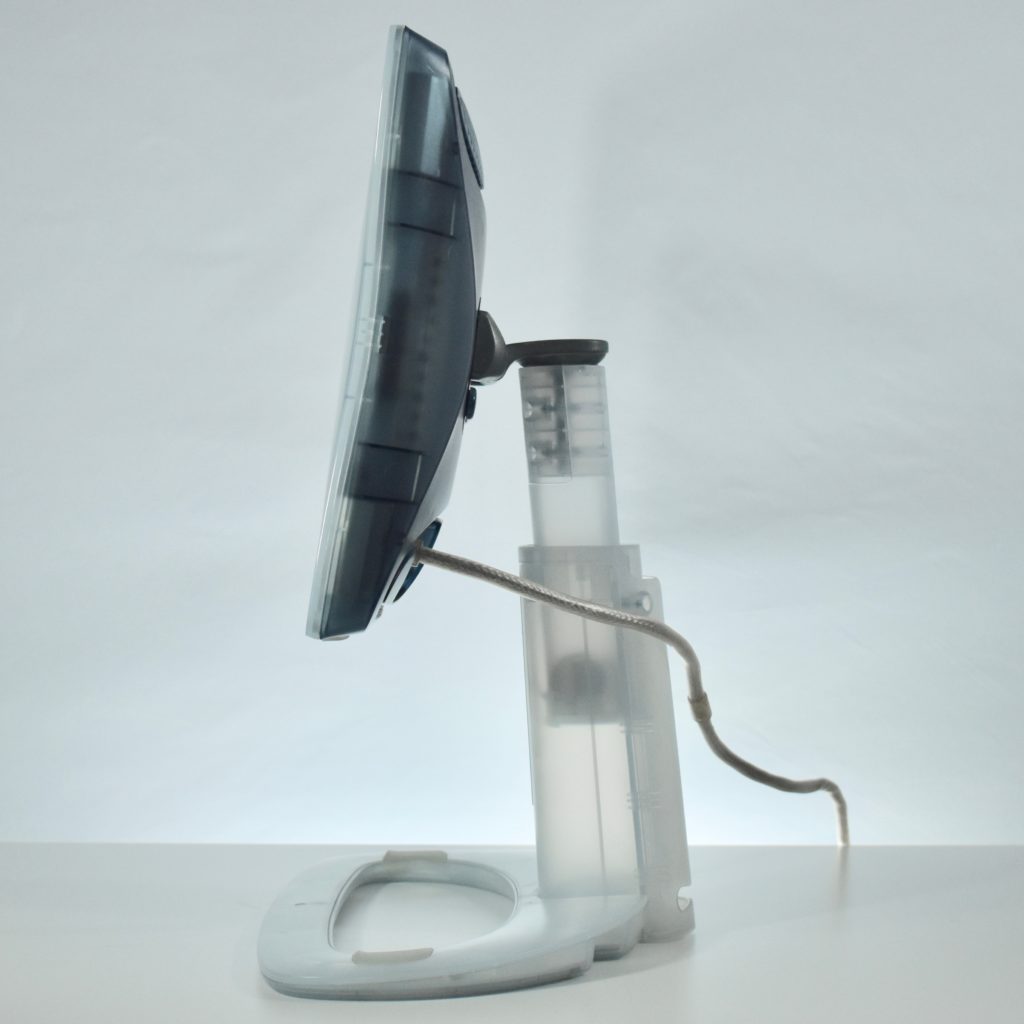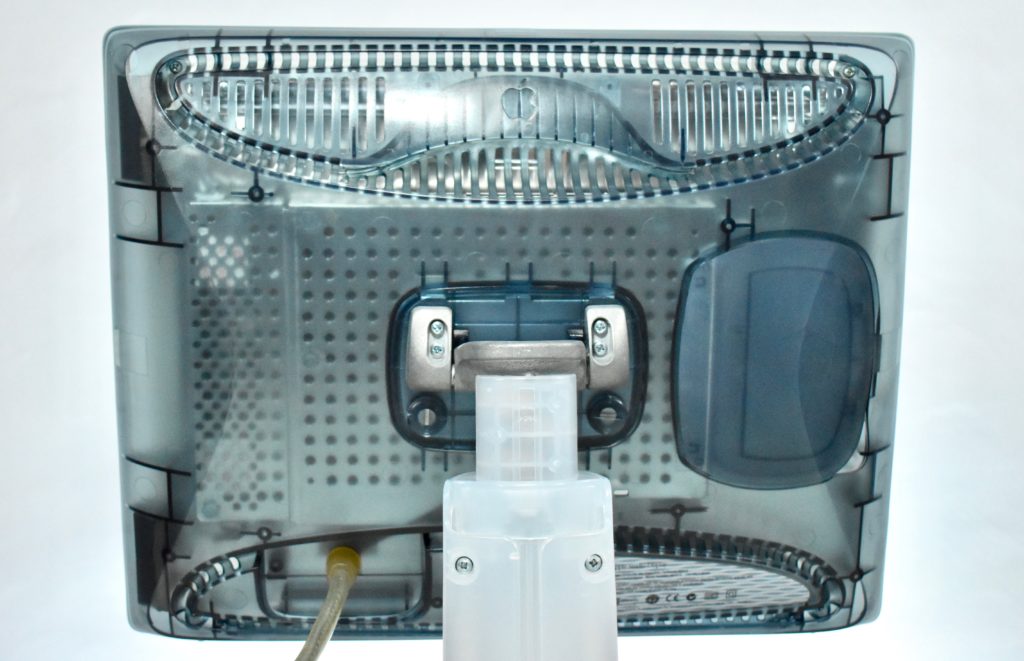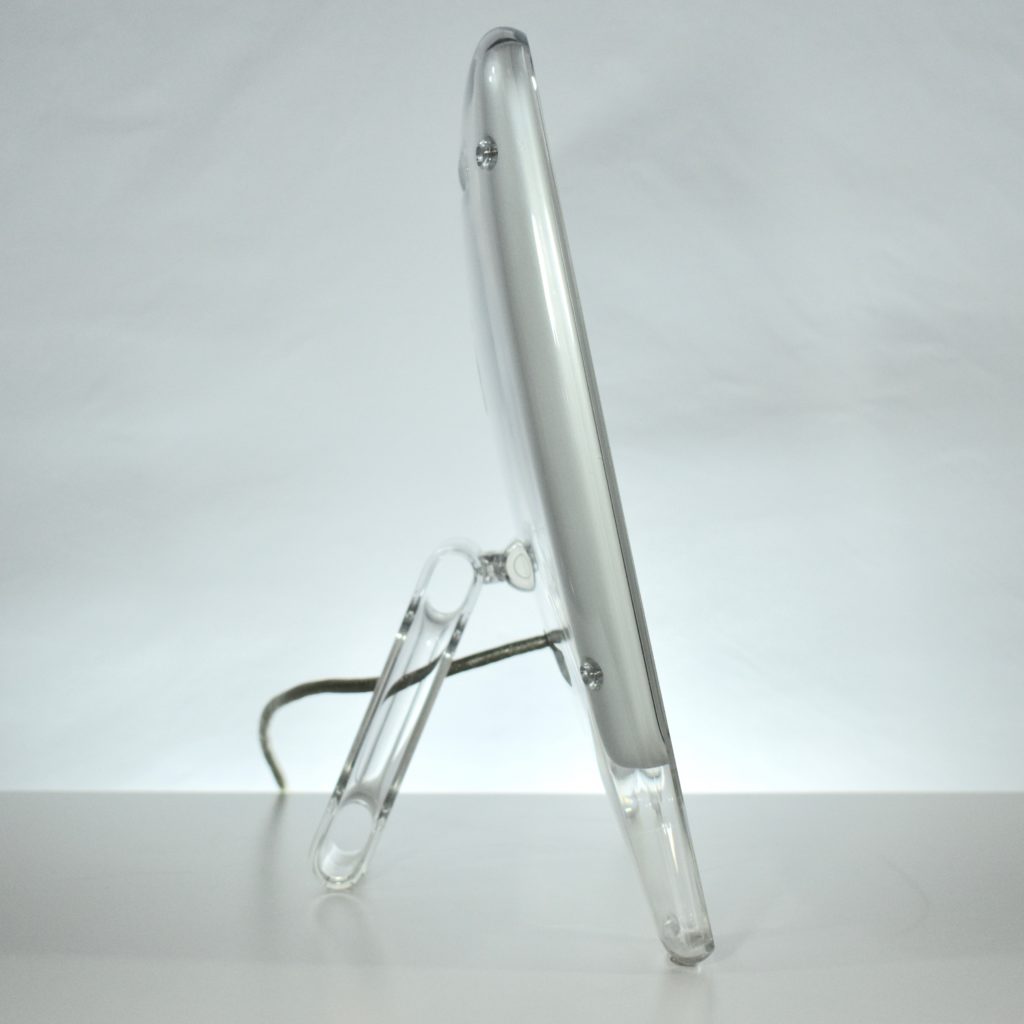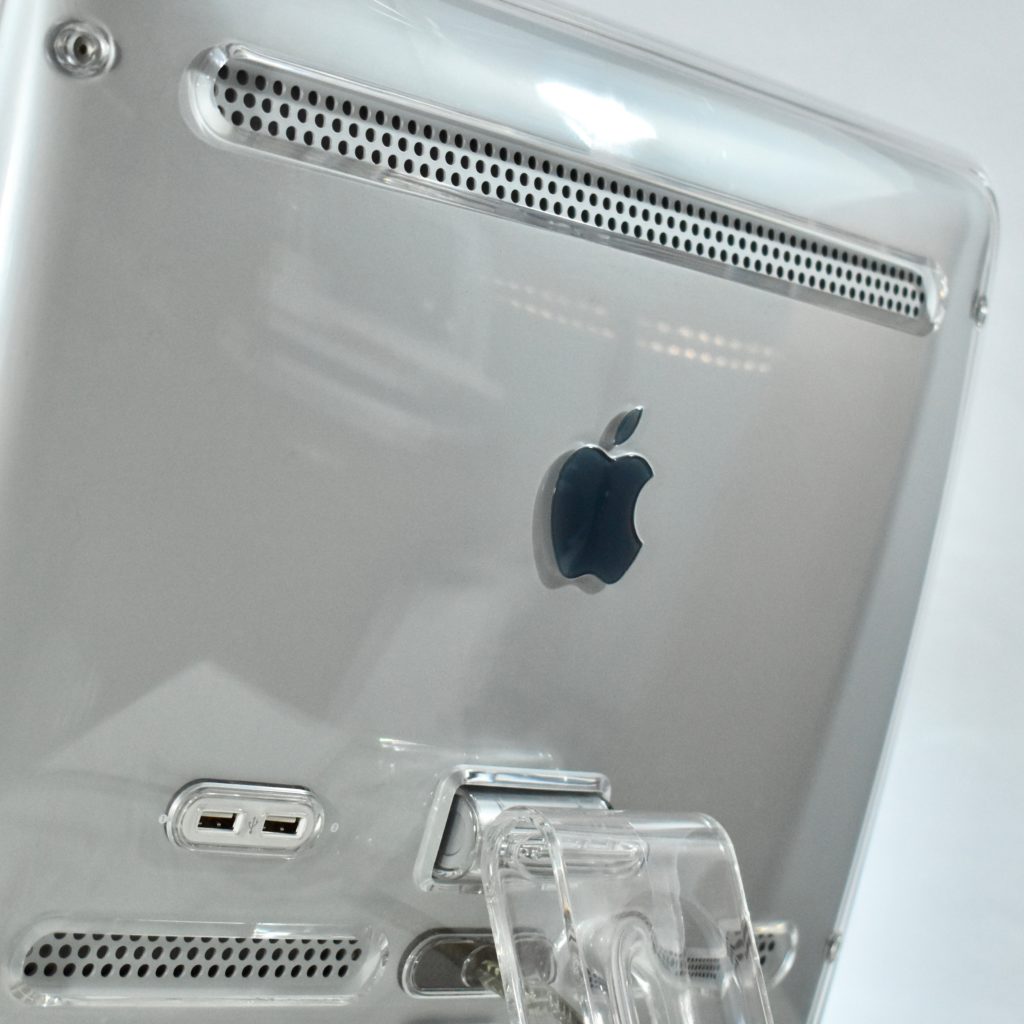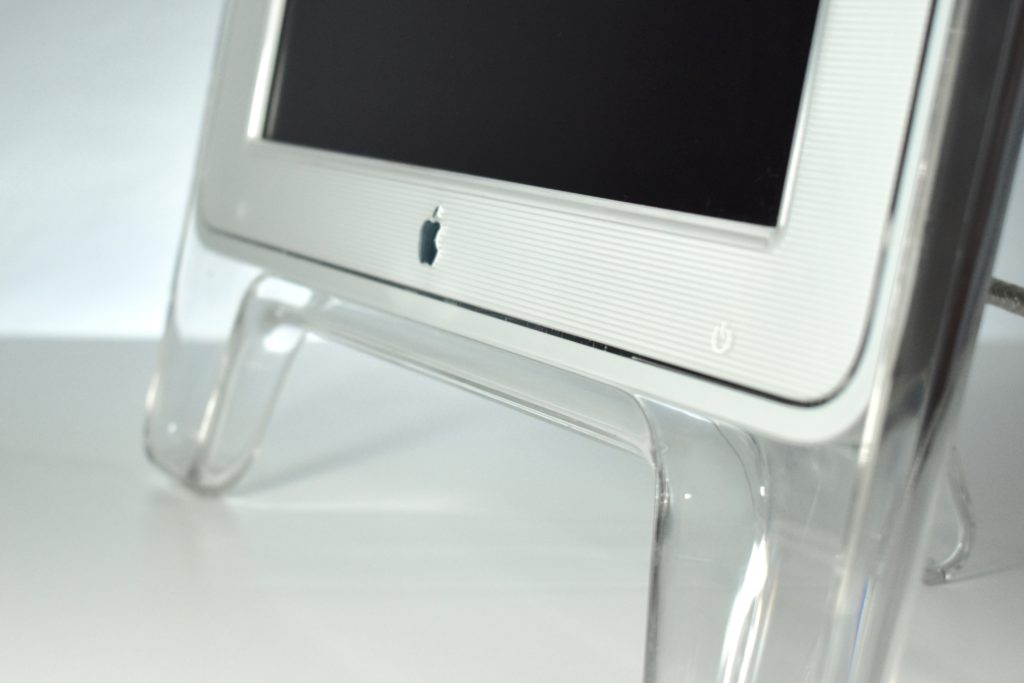This version of the Apple Studio Display was announced on March 8, 2022, along with the Mac Studio. Apple described the display: “A big, beautiful window into new worlds, Studio Display draws you in from the moment you turn it on. It has a slim, all-screen design. And it’s packed with a phenomenal set of features so everything you do springs to life with gorgeous color and spectacular detail.”
The 27-inch display featured a 5K Retina display at 5120×2880 resolution (218 pixels per inch), a built-in 12MP Ultra Wide camera, a high-fidelity six-speaker system, and was powered by the A13 Bionic chip.
This packaging was included inside the Apple Studio Display and housed an included all-black Thunderbolt cable and a selection of paperwork, including:
- Regulatory notes and safety information (two 2-sided sheets)
- A color booklet explaining the display’s basic features
- Apple stickers (2 black stickers on one page)
Please note that the all-black Apple logo stickers were considered somewhat rare in 2022 and were general only included with “Pro” Apple hardware.
This cardboard package measures 95 x 165 x 37 mm. Inside, it includes a pocket for the paperwork and a unique, all-cardboard structure to neatly pack the 1-meter Thunderbolt braided black cable.
Apple (Newsroom, product page)















